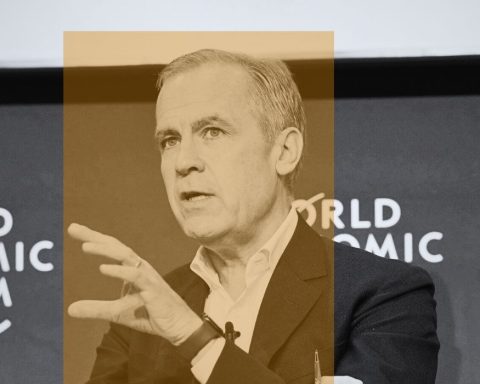In response to accusations of greenwashing and growing regulatory scrutiny, a group of high-powered financial networks is working to standardize the often-opaque jargon of the responsible investing industry.
Driven by concerns that investors are being misled, sustainable investment leaders are hoping to streamline and codify the sometimes-murky terminology of ESG investing (which takes into consideration environmental, social and governance factors).
“It’s very important that we have clear terminology that everyone understands,” says Roger Beauchemin, CEO of Addenda Capital and chair of the Canadian Responsible Investment Association (RIA). RIA is a member of one of the three sustainable investment networks that formed the Collaboration to Align and Refine ESG Terminology (CARET) late last year.
The CARET partnership includes the Global Sustainable Investment Alliance, made up of responsible investment networks in the United States, Europe, the United Kingdom, the Netherlands, Australia, Japan and Canada (RIA is the Canadian member); the Principles for Responsible Investment, with more than 5,000 signatory organizations managing over US$120 trillion in assets; and the Chartered Financial Analyst (CFA) Institute, the global professional body for more than 190,000 investment managers and analysts.
A technical committee is reviewing key ESG and sustainable investing concepts, which will go to a steering committee by the end of the year, says Mary Robinson, director of research and investor networks for RIA and a member of the CARET technical committee. Once the new terminology is finalized, the organizations will encourage the money management industry and investors to incorporate it into their own definitions of sustainable and responsible investment.
As well, organizers hope to influence the growing body of regulatory standards governing industry practice and disclosure, which has been triggered by greenwashing concerns.
“The regulators are concerned that investors may be getting misled – or mis-sold something that hasn’t been properly characterized,” Robinson said in an interview after participating in a session on the CARET project at the RIA conference in Toronto in early June.
The conference was held at an important time for the responsible investment industry in Canada and around the world. The sector has faced a steady drumbeat of greenwashing allegations and a series of regulatory crackdowns on misleading communications and marketing.
The theme of this year’s conference was “This is the moment to get it right,” a reference to a feeling by many in the industry that it has overpromised and underdelivered on environmental and social impact. This has become especially true in the last few years as UN climate change summits have raised expectations that global capital can be deployed to help solve the climate crisis.
Oversight lacking
The CARET project is a response to a problem that has its roots in the early 2000s, when small and medium-sized money management firms started to issue funds and other products with little regulatory oversight using basic ESG screening, engagement, thematic and impact investing strategies.
In the beginning, most banks and large money management firms didn’t pay much attention. But after rebounding from the financial crisis of 2008, they found a new market in sustainable investment and launched a barrage of funds using ESG integration as the dominant strategy.
The value of global sustainable investment assets jumped from US$23 trillion in 2016 to US$35 trillion in 2020. In the U.S., sustainable investments quadrupled from US$4 trillion in 2014 to US$17 trillion in 2020.
The regulators are concerned that investors may be getting misled – or mis-sold something that hasn’t been properly characterized.
– Mary Robinson, the Canadian Responsible Investment Association
Accusations of greenwashing grew along with this expansion.
Regulators responded with a wave of new rules. Europe established the Sustainable Finance Disclosure Regulation earlier this year, requiring funds to categorize themselves on a sustainable investment scale. Securities rulemakers in the U.S. and U.K. have proposed similar regulations. Last year, Canada set new disclosure guidance for funds with ESG names, requiring transparency on investment objectives and how ESG factors are evaluated and monitored.
The regulatory crackdown has resulted in a shrinking of official estimates of the size of the ESG industry. Asset managers are reluctant to publicize ESG funds that may be offside of the new rules. And industry researchers are scrutinizing which managers qualify for the sustainable label. As a result, the official estimate of sustainable investment assets in the U.S. has dropped from US$17 trillion in 2020 to US$8 trillion last year.
ESG integration under scrutiny
While all ESG strategies have definitional problems, ESG integration is generating the most confusion among investors. ESG integration is the explicit and systematic inclusion of ESG factors in investment analysis and investment decisions.
“One of the biggest issues with ESG integration, and probably one of the sources of confusion, is that you can’t look at a portfolio to verify whether ESG has been integrated,” Robinson told the conference. This is different from sustainable investment screening or thematic strategies, for example, in which it’s easy to discern whether screens or themes are being adopted by looking at the companies in a portfolio.
In addition to ESG integration, the project is reviewing definitions for four other ESG strategies: screening (the exclusion of investments based on certain ESG screens – i.e., human rights violators or fossil fuel producers), thematic investing (investing in specified ESG themes, such as renewable energy), stewardship and engagement (management of ESG issues through corporate meetings and voting) and impact investing (the conscious investment of capital to create social or environmental impact).
A 2015 report from the U.S. Forum for Sustainable and Responsible Investment found that eight of 16 large money managers claiming to use ESG integration failed to disclose specific ESG criteria being integrated, or provided criteria only for certain asset classes such as property or fixed income.
The CARET project proposes to define ESG integration as the incorporation of ESG factors into financial risk management, distinguishing it from ESG screens or themes more associated with social or environmental impact.
This business is full of acronyms. We need to simplify that. We need to codify it.
– Roger Beauchemin, CEO of Addenda Capital and chair of RIA
“It should help reduce risk if you are considering material ESG factors that could have a material impact on your performance,” says Nicole Gehrig, the CFA Institute’s director of global industry standards. New ESG integration guidance from the CFA for managers and analysts is expected to be a part of the CARET recommendations.
By emphasizing ESG integration as a risk-reduction tool rather than a vehicle for environmental or social impact, the new definition of ESG integration will help to distinguish money managers who want to use it for risk management from those who want to tackle real-world problems like climate change by using the other sustainable investment strategies.
It remains to be seen how successful the CARET project will be in winning over the sustainable investing industry to its new terminology, or whether regulators will incorporate the new language into communication and marketing rules.
But Beauchemin says the project is vital to the future success of the industry. “This business is full of acronyms,” he says. “We need to simplify that. We need to codify it. Those are foundational pieces. And if we’re going to build, we need to have strong foundations that everyone agrees on.”
Eugene Ellmen is a former executive director of the Canadian Social Investment Organization (now Responsible Investment Association). He writes on sustainable business and finance.







